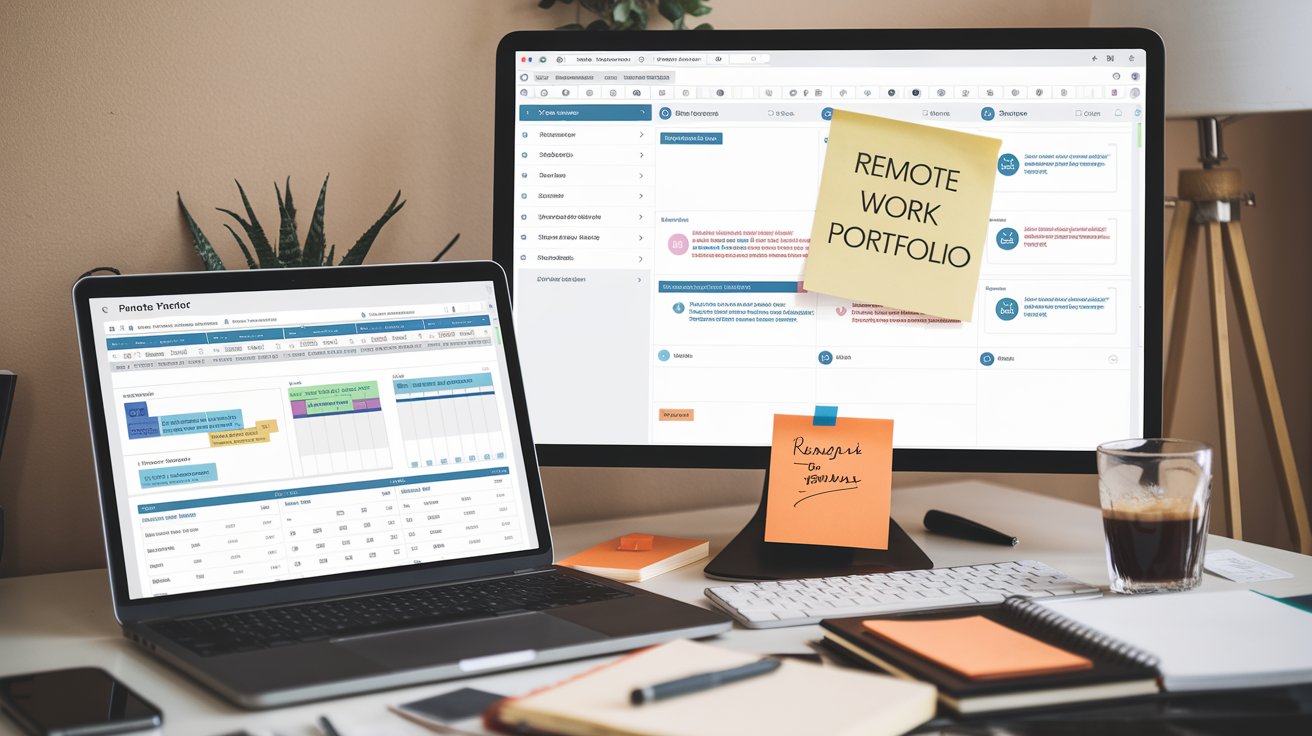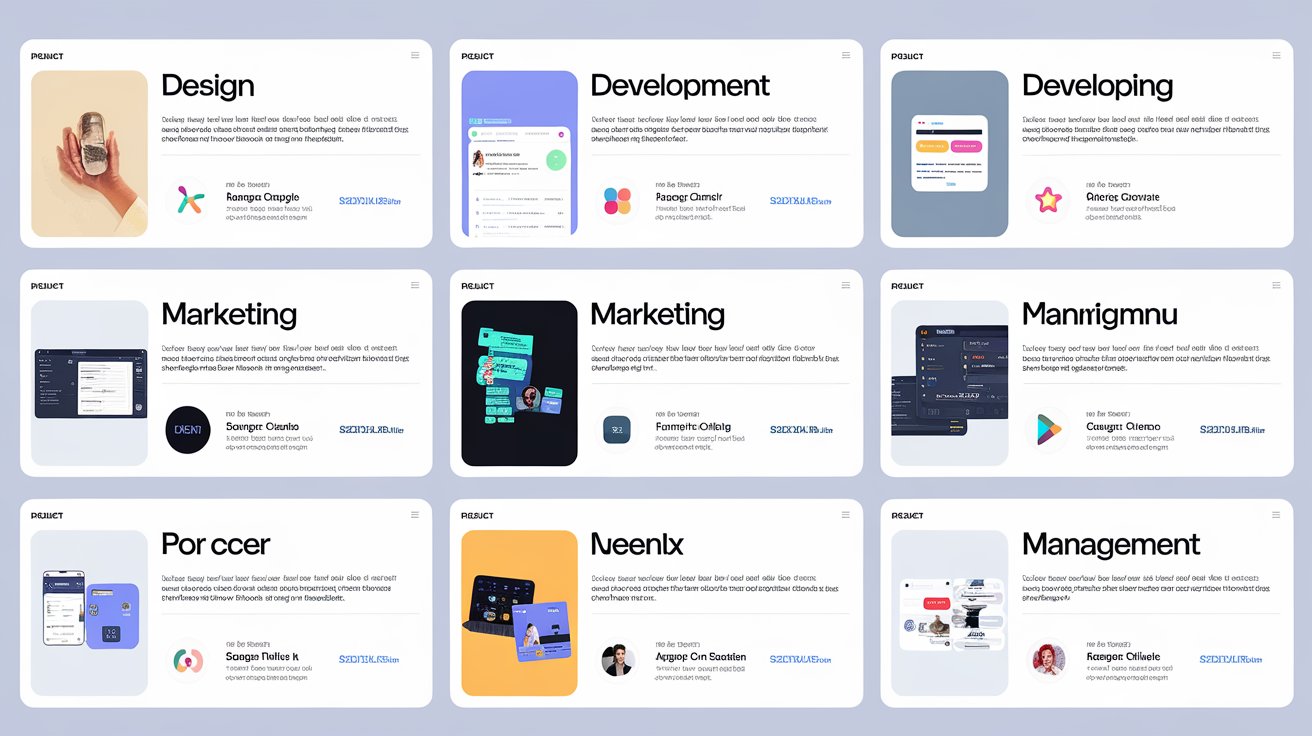
Remote Work Portfolio: Common Mistakes & How to Avoid Them
Have you ever wondered why your remote work portfolio isn't getting you the desired positions? You are not alone. A well-planned and engaging remote work portfolio might be the key to landing your dream job—but if done poorly, it could hold you back.
Many workers make preventable errors—like disorganized design, vague explanations, or irrelevant content—that ultimately hold them back.
This article is for you if you are serious about advancing your career in remote work, whether you are a designer, writer, developer, marketer, or any kind of digital freelancer. This comprehensive guide will walk you through the most common remote work portfolio mistakes, how to quickly correct them, and what distinguishes your portfolio from others.
Stay with us until the end as we are going deep with examples, professional advice, and an analysis of what clients need in a remote job portfolio.
What Makes a Strong Remote Work Portfolio?
Before diving into what not to do, let’s take a moment to clarify what an effective remote work portfolio should include. A strong remote work portfolio tells a clear story about who you are, what you do, and how well you do it—without needing hours of explanation.
Key Elements of a Winning Remote Work Portfolio:
- A clean layout: First impressions count. A cluttered remote work portfolio is an instant turn-off.
- Your niche and services: Be specific and targeted. Your remote work portfolio should highlight your focus and specialties.
- Strong work samples: Don’t just list projects—explain the impact. Your remote work portfolio should prove you get results.
- Client testimonials or social proof: Trust builds fast when your remote work portfolio includes credible feedback.
- Your personality: People hire people. Your remote work portfolio should give a sense of who you are to work with.
Read also: How Freelance Translators Contribute to the Localization Industry
Most Common Remote Work Portfolio Mistakes (and How to Avoid Them)

Mistake #1: Lack of Focus
A scattered remote work portfolio can confuse clients. They won’t know what you specialize in or whether you’re the right fit.
Fix it: Narrow your focus. Structure your remote work portfolio around your strongest niche or industry to make it easy for clients to understand your expertise.
Mistake #2: Missing Case Studies or Context
Simply uploading designs or links isn’t enough. A vague remote work portfolio fails to communicate your value.
Fix it: Use short case studies. Every item in your remote work portfolio should include a brief background, your role, and the results.
Mistake #3: Outdated Projects
If your remote work portfolio showcases work from five years ago, it can make you appear inactive or out of touch with industry trends.
Fix it: Regularly update your remote work portfolio with fresh projects. Remove anything that no longer reflects your current skill level.
Mistake #4: Ignoring Mobile Optimization
A remote work portfolio that looks good only on desktop will miss out on a huge chunk of mobile-first clients.
Fix it: Make sure your remote work portfolio is responsive and looks amazing on every device.
Mistake #5: No CTA or Contact Info
A beautiful remote work portfolio that doesn’t lead to action is a missed opportunity.
Fix it: Add a strong CTA (“Hire me”, “Let’s work together”) and make it ridiculously easy to contact you.
Read also: Freelance Translation Jobs: How to Stand Out in a Competitive Market
Key Elements of an Effective Freelance Writing Portfolio
Even though this article focuses on remote work generally, writers often struggle with showcasing their value. A freelance writing-focused remote work portfolio should include:
- Niche-targeted blog posts or ghostwriting samples
- SEO writing samples (especially for blog gamers or niche sites)
- Headline writing examples or copywriting tests
- Metrics (traffic, engagement, ranking improvements)
- Links to published work or PDFs if ghostwritten
Make sure your remote work portfolio positions you not just as a writer, but as a strategic asset.
Read also: Challenges of Remote Work and How Companies Are Adapting
Pro Tips for Enhancing Your Remote Work Portfolio
Tip #1: Tailor Your Portfolio for Each Opportunity
Don’t send the same remote work portfolio to every potential client. Customize it with samples and messaging that align with their needs.
Tip #2: Show Process, Not Just Outcomes
Clients love seeing how you work. Your remote work portfolio should include screenshots, strategy notes, and decision-making steps when possible.
Tip #3: Add Video Introductions
Put a face to the name. A short video about who you are and how you help can make your remote work portfolio more personal and memorable.
Tip #4: Collect Testimonials Early
Ask past collaborators, teachers, or even mock clients to provide feedback. Even without formal experience, social proof can significantly boost your remote work portfolio.
Free & Paid Tools to Build Your Remote Work Portfolio
Here are the best platforms to host your remote work portfolio depending on your style and budget:
- Notion (Free/Customizable)
- Carrd.co (Simple & affordable)
- WordPress (More control, scalable)
- Squarespace / Wix (Great for visual storytelling)
- Clippings.me (Best for writers)
No matter which platform you choose, ensure your remote work portfolio is easy to navigate and visually aligned with your personal brand.
Why a Great Remote Work Portfolio Is More Important Than Your Resume
In the world of freelancing and remote work, your remote work portfolio often is your resume. Clients want proof, not promises.
- They want to see that you can deliver.
- They want to feel confident in your style, tone, and skill level.
- They want a quick way to decide whether to contact you.
Your remote work portfolio is your 24/7 salesperson. Make it count.
Final Checklist Before Publishing Your Remote Work Portfolio
- Is your remote work portfolio mobile-optimized?
- Do you have your best, most relevant work featured?
- Are your contact options visible and easy to use?
- Does every project include some context or backstory?
- Is your remote work portfolio aligned with your target clients?
If you checked “no” to any of those, take the time to polish your site before promoting it.
Conclusion: Your Portfolio Is Your Superpower
Your remote work portfolio is more than a website or a collection of links—it’s a carefully curated story of your skills, mindset, and value. In the world of remote work, where employers and clients may never meet you in person, your portfolio does the talking. Avoiding common mistakes can mean the difference between getting ignored and getting fully booked.
Ready to elevate your remote career? Join Digital-Trans Asia’s vibrant network of freelancers and remote professionals! Whether you’re a translator, writer, or localization expert, we’re looking for talent like you to create impactful content for global audiences. Explore exciting opportunities on our careers page and contact us today to showcase your skills and make your portfolio shine on a global stage!